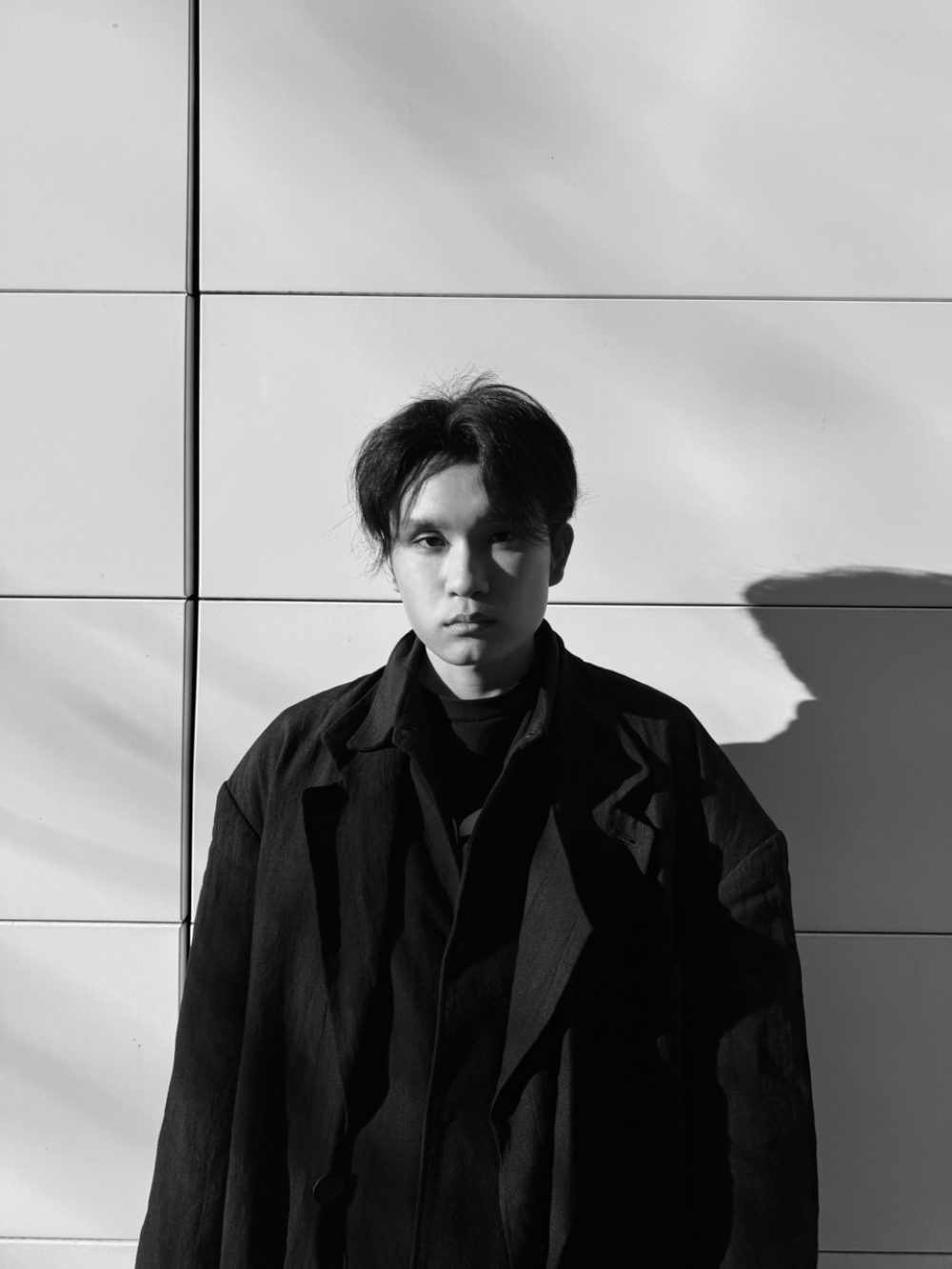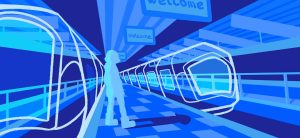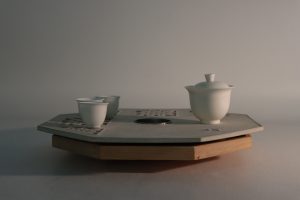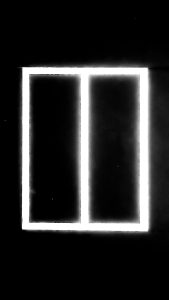ANGELS ARE EPHEMERAL
Tiger Peng
See it On Campus: Level 2
Visitor InfoSecond Floor Sculpture Gallery
Exploratory Collection → Study of Voids →43:13 →Phylliidae/Body
The Angels Are Ephemeral thesis originated from various speculative biology and future-focused fiction, where authors adopt a writing style reminiscent of field notes. The depth of research and narrative depiction of fictional post-human civilizations, their conflicts, and daily lives captivated me, rendering these books incredibly immersive and 4D. In line with my thesis, I developed an exploratory speculative collection to narrate stories through clothing. Through pursuits in Creative Direction, Garment Creation, Pattern Drafting, Material Exploration, and clothing technology, I engaged in dichotomous storytelling, transitioning from experimentation to production, and showcasing garments in various exhibition formats.

ANGELS ARE EPHEMERAL EXPLORATORY COLLECTION
FALL 2023
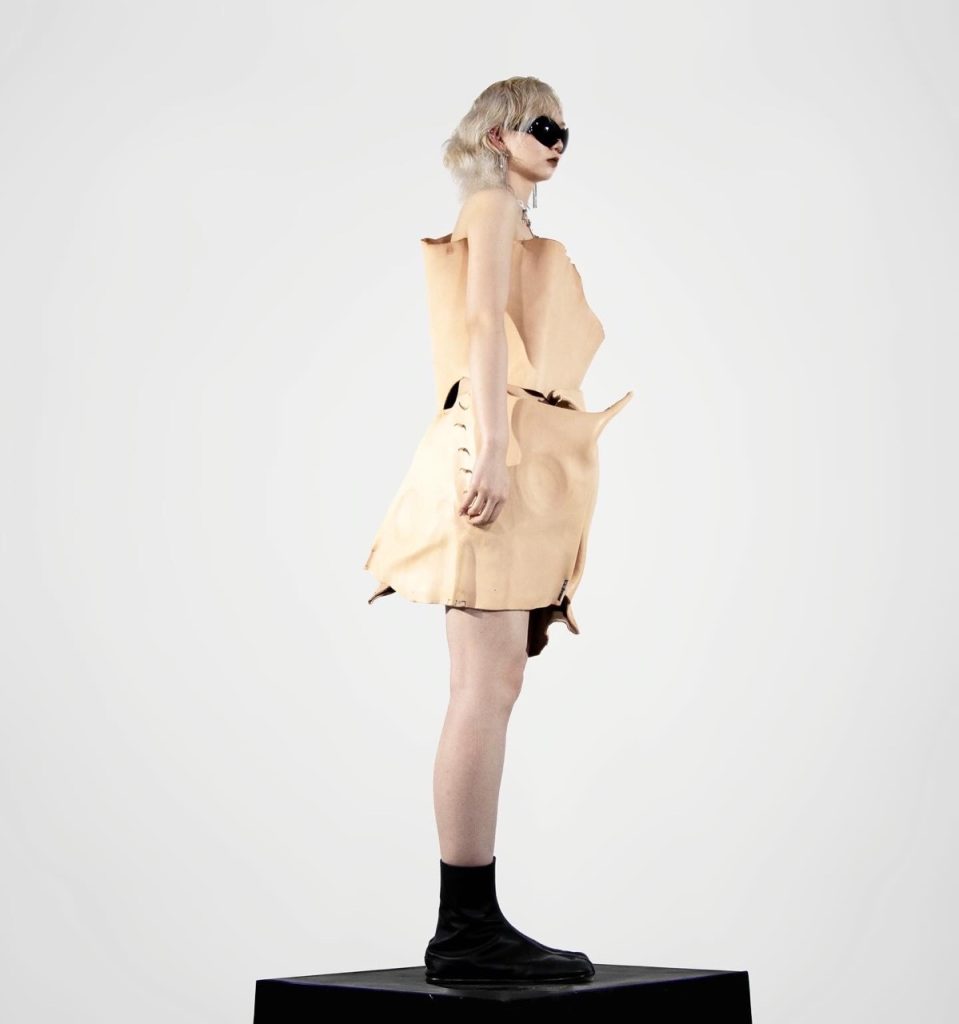
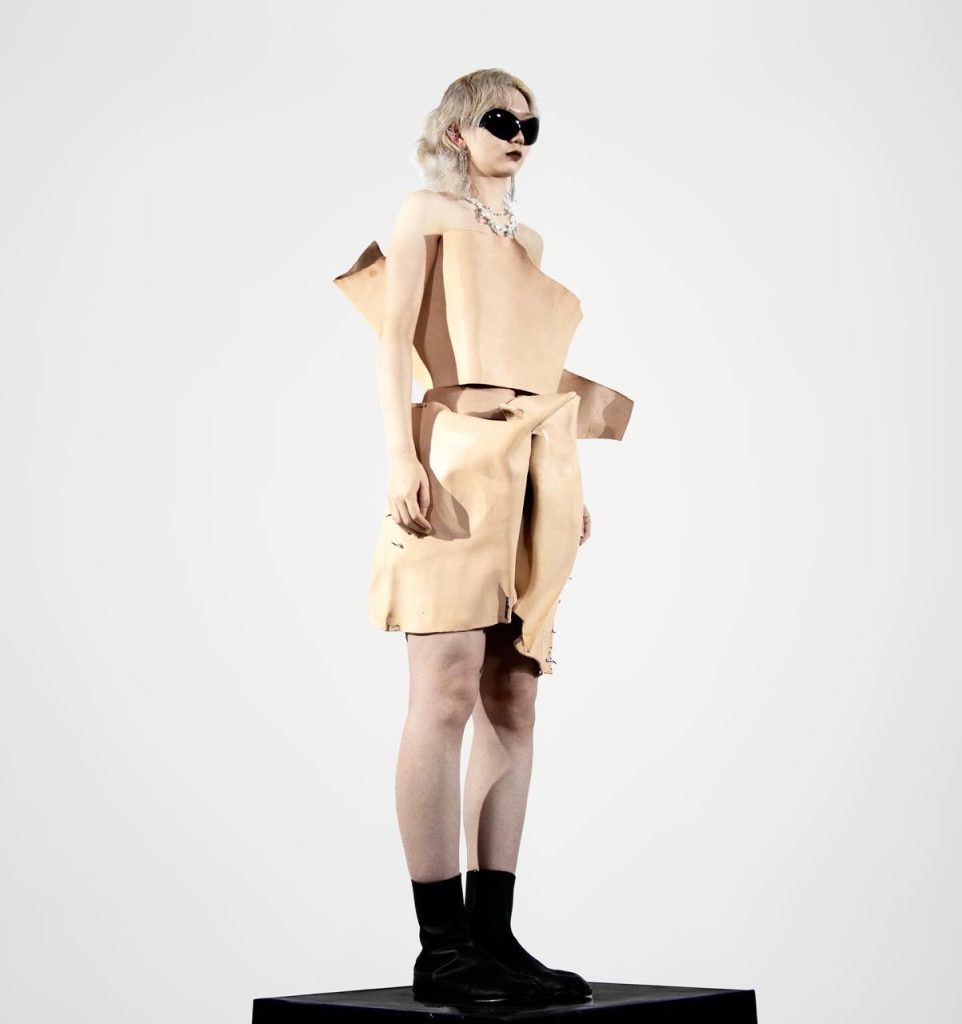
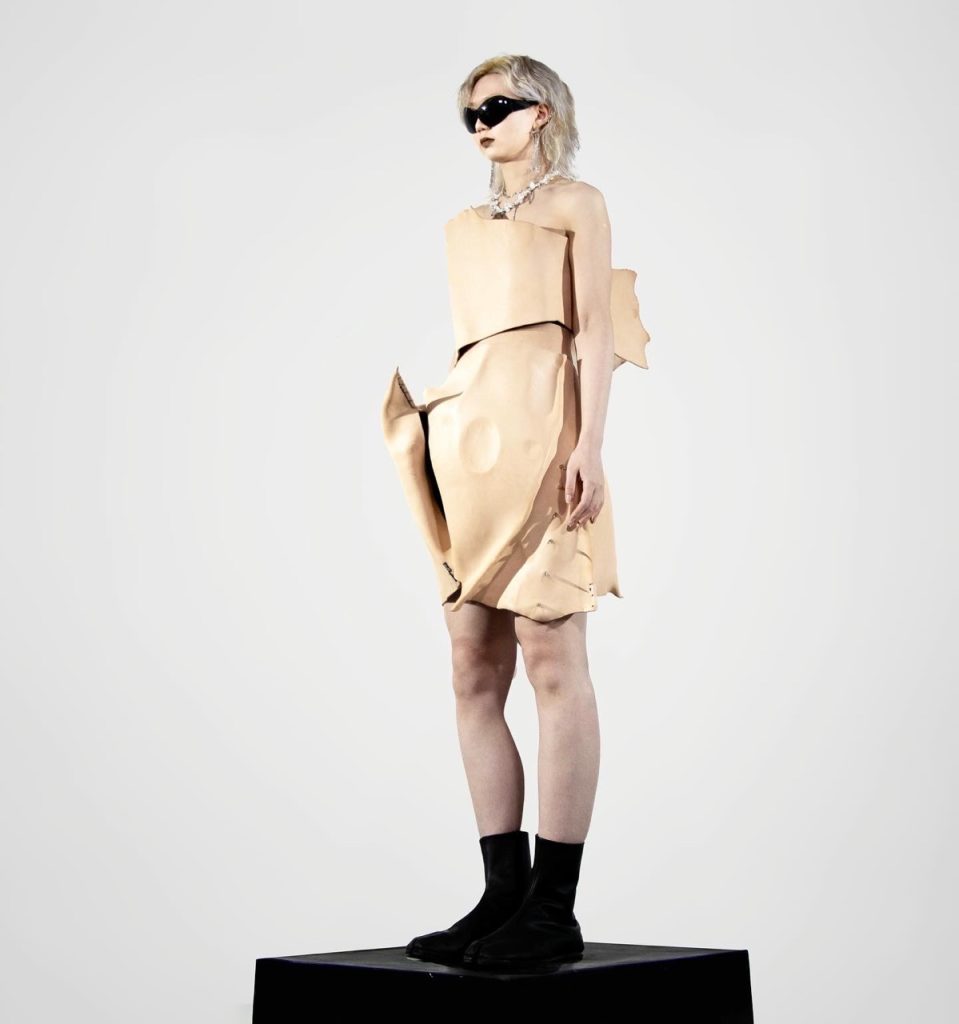
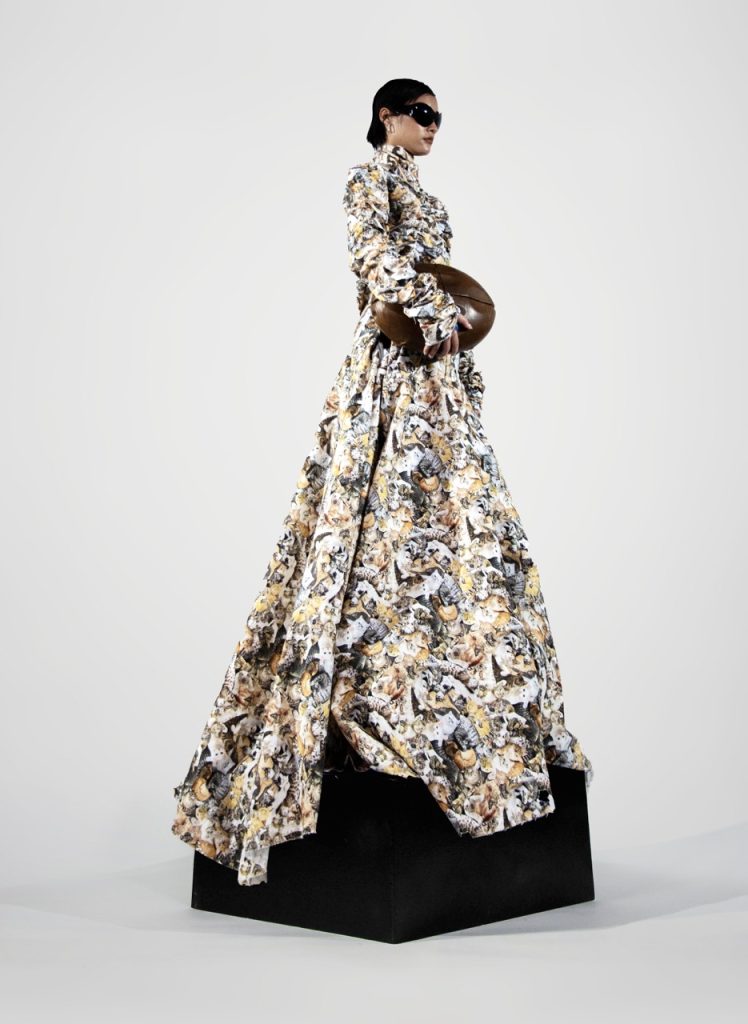
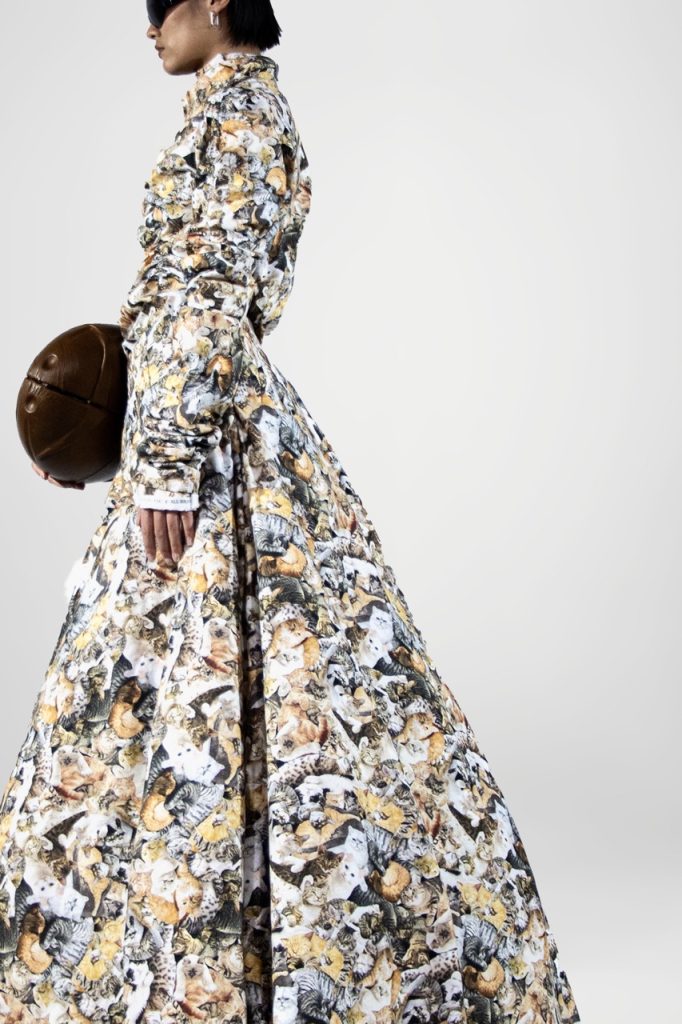
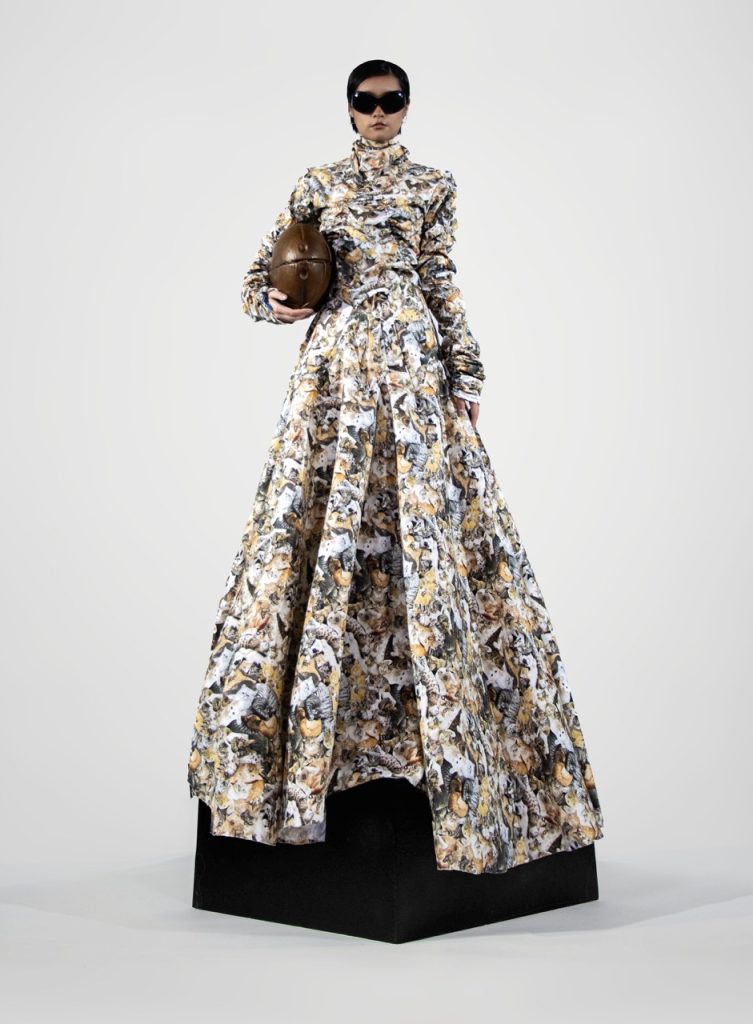
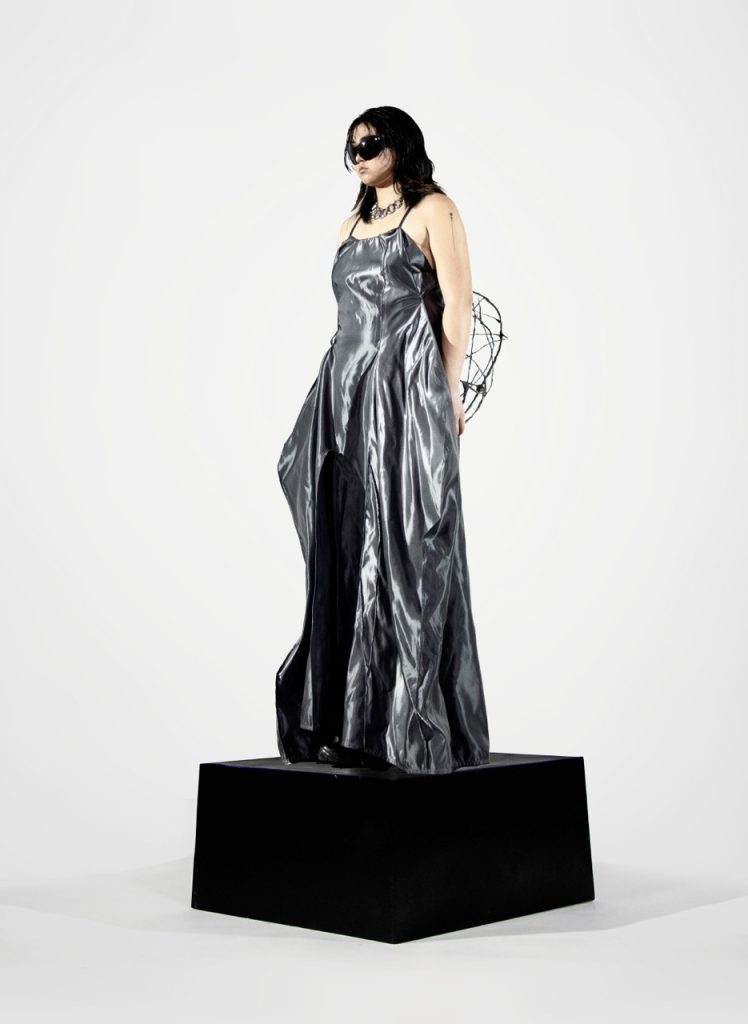
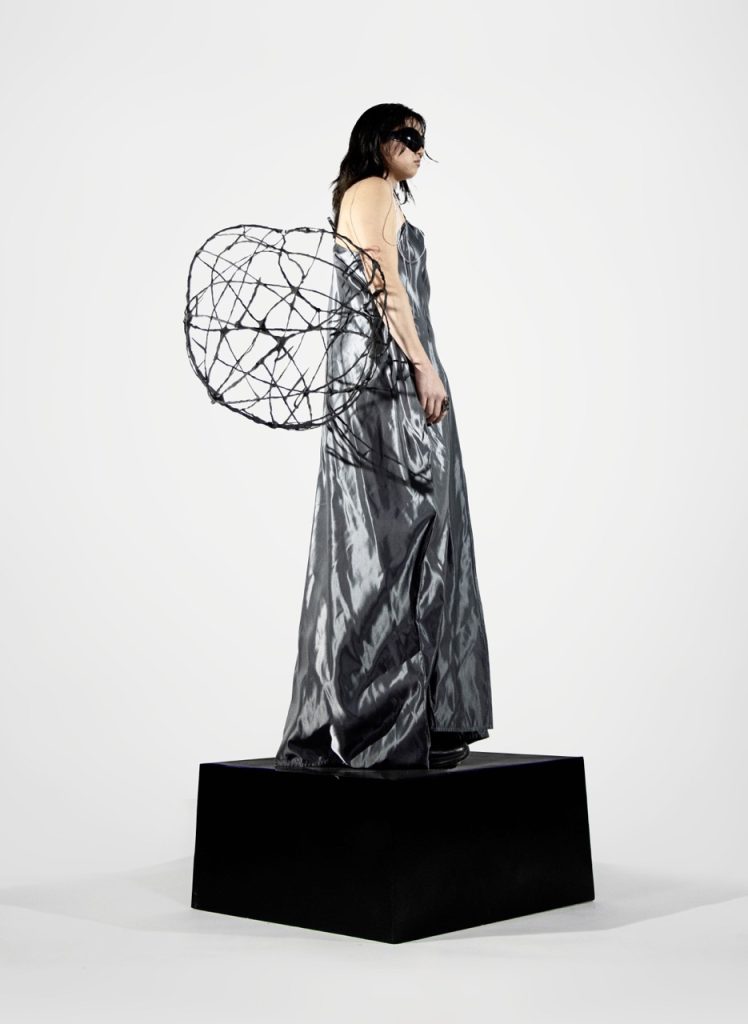
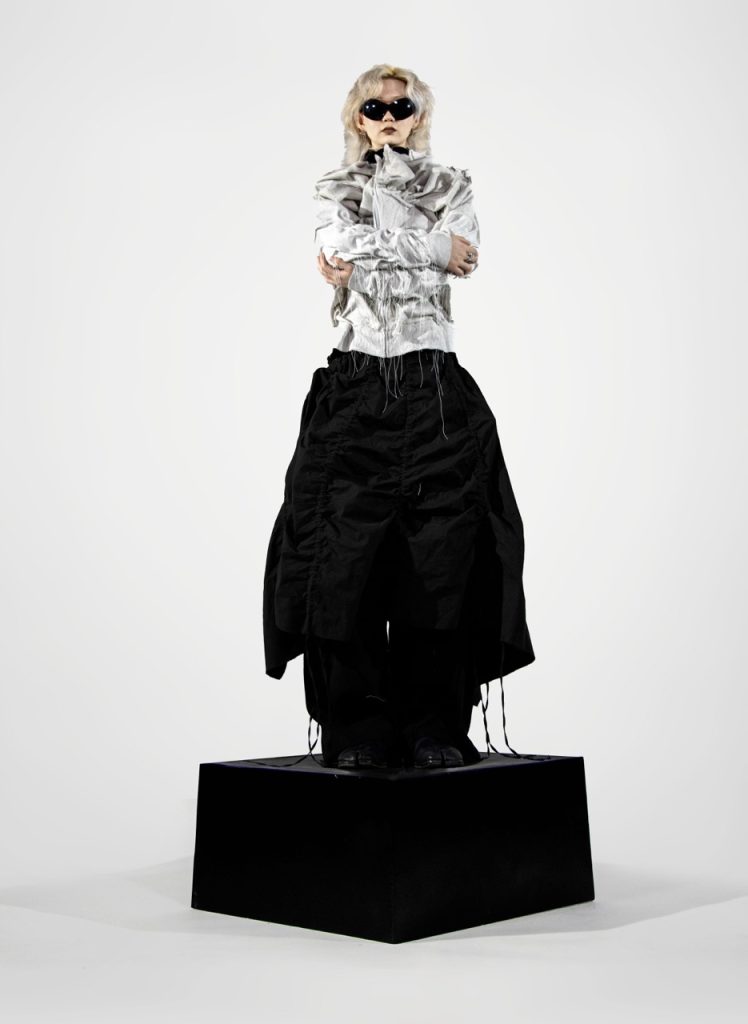
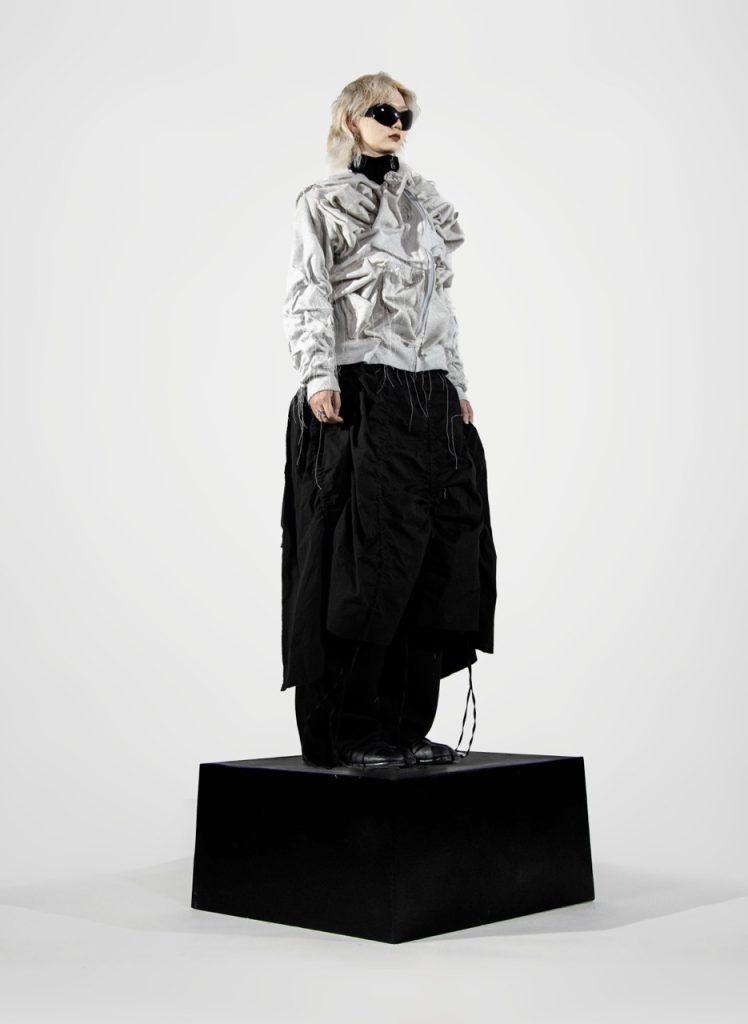
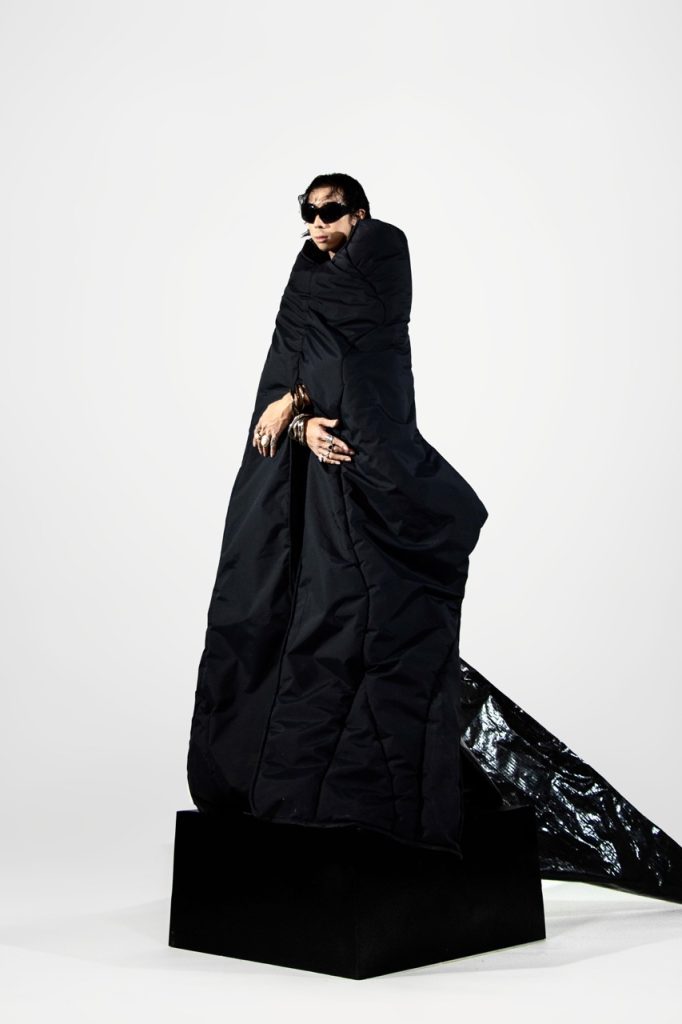

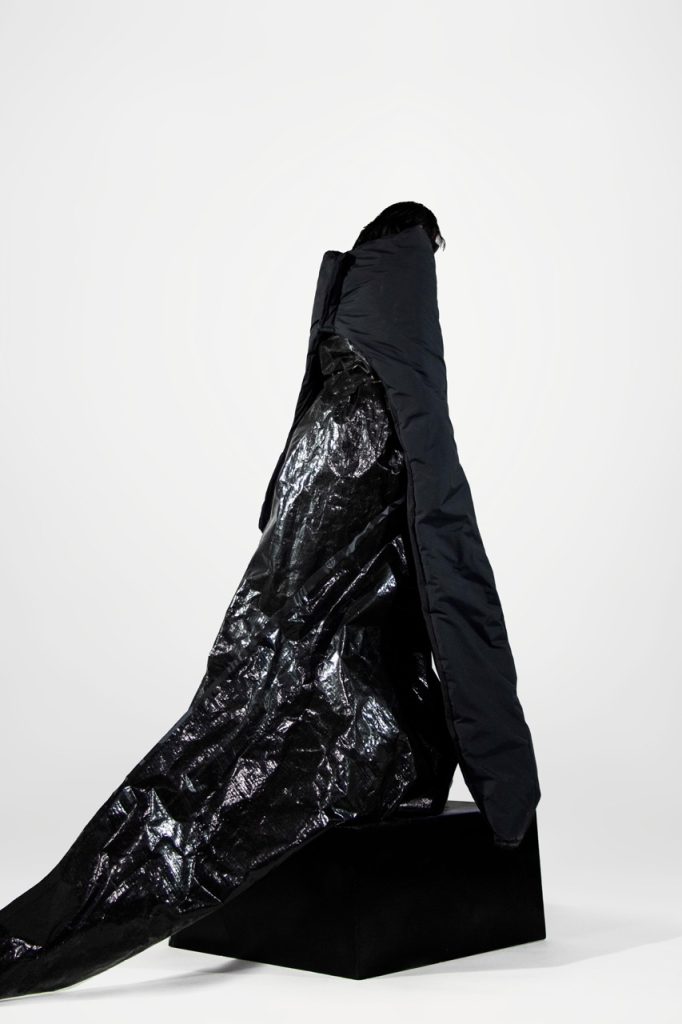
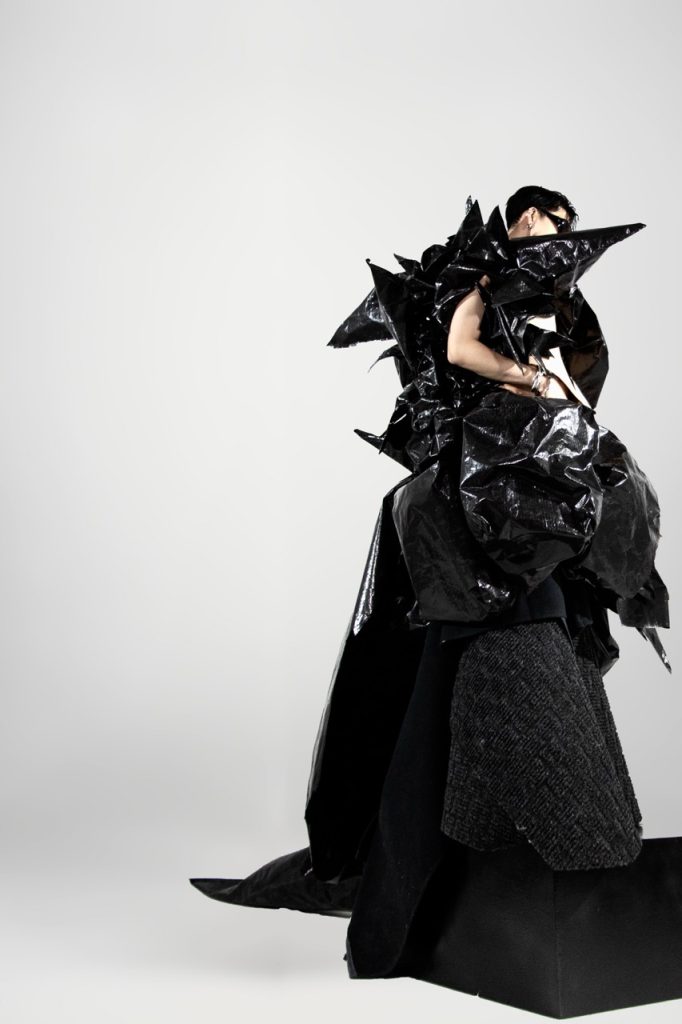



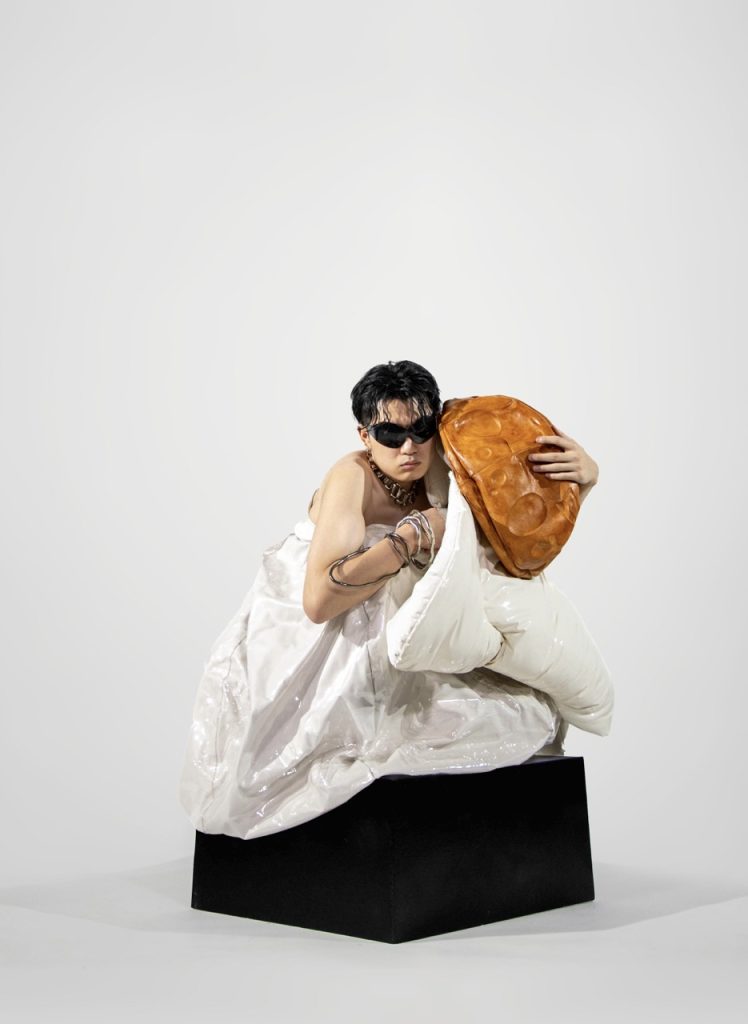
- LOOK 1: Using leather wet-molding, I reconstructed the human form, blurring our relation to the traditional bodice. Using this distorted form, I wanted to distance myself from the constructs that follow the traditional body to start the collection.
- LOOK 2: Inspired by old Soviet Russian curtains, I wanted to capture a liminal memory encased in a dream-like state. The girl in the dress embodies childhood memories of backyard stray cats, the sunlight peering through the curtains, and the vision that feels lost, reappearing in the in-between.
- LOOK 3: Through transition, the embryo in her hand expands, covering the skies; the girl is lost and replaced by reflections in the skies and towering mega-buildings’ lights. The transitional phase is represented by the dress made from a single sheet of fabric, with its reflectiveness constructing the skies of my scene.
- LOOK 4: Using a hoodie I have worn since high school, I marked out the lines made by my years of movement in it. I also conducted a group creation session where several peers made different shapes from the hoodie; from that, I solidified the shape with hard shells inside to form deception and visual mimicry.
- LOOK 5: I imagined what a clothing’s utility could be in the future. Through the girl’s transition, a black puffer cloak covers a constant dream, connected with others online. When a human’s normal life cycle is disrupted and the body’s life becomes unclear, replaced by artificial replicas of human consciousness, everyone lives forever online. The construction protects the physically immobile body from changes in weather, considering human movement becomes unimportant. The hole in the middle acts as easy access for machines to distribute physical nutrition to the sleeping bodies. I copied my veins onto the quilting to further bind the clothing to the body.
- LOOK 6: Towering structures where the dreamer dreams. I wanted to bring buildings and mega-structures into my story. Creating shapes from gathered sounds in urban landscapes, hitting surfaces of metal, wood, and concrete to construct a soundscape, and transferring them onto a visualizer and then into real cut-out forms to drape constantly on my body. There are over 9 different variations of forms before I solidified the shape, forming the structures that cover the night skies in my narrative.
- LOOK 7: The silent whiteness—Is “she” awake from this dream, or is the dream real? The comfort of the bedsheets with the unfamiliar feeling of complete white voids. What became of “her”? I kept the foot bound in my construction while liberating the top part of the garment, obscuring the body and blurring the ending.
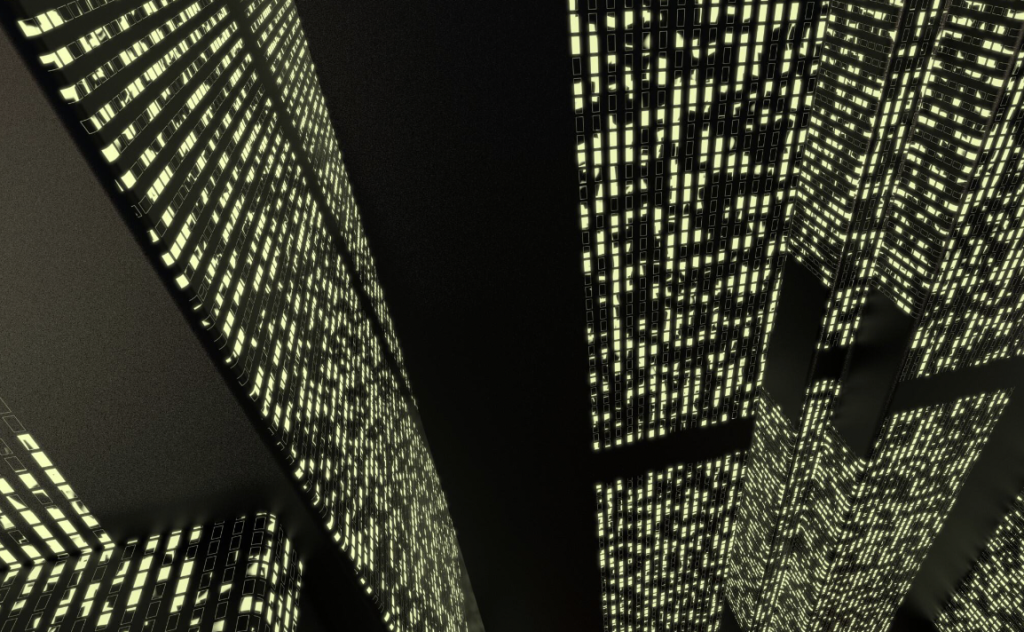
EMBRYO
The Embryo is a bag forms I created from the constant repeated patterns of bird flights. In big numbers I programmed a algorithmic system in Touch Designer to make out the constant repeating movements and then drawed them out. The form is then printed and wet molded for 6 hours with leather before joined together. The embryo fits into the storyline as the mind. We see a dormant embryo at the start of the collection with look 2, it quickly expands to fill the skies in look 3 before becoming flesh like and intertwined in the end.
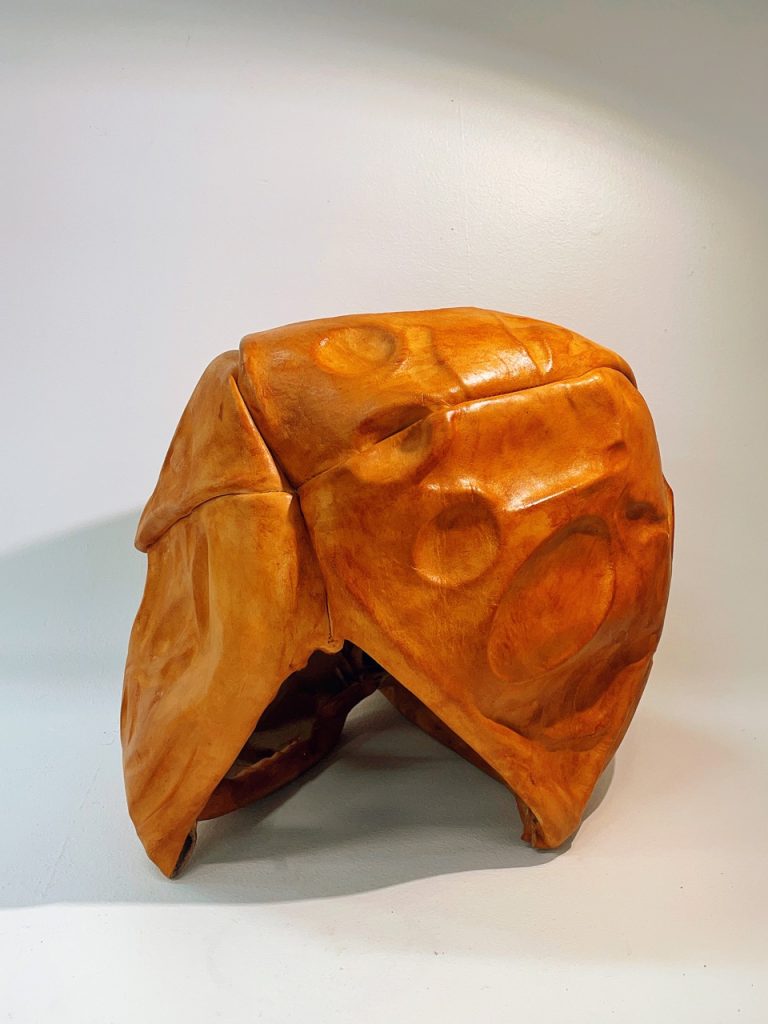
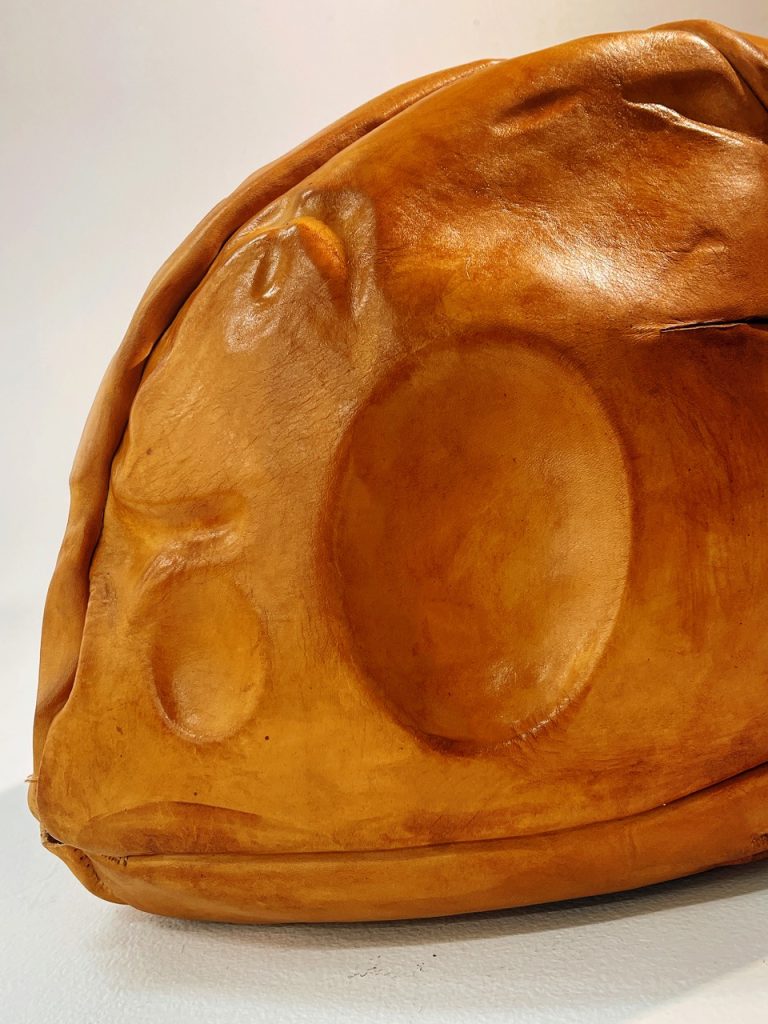
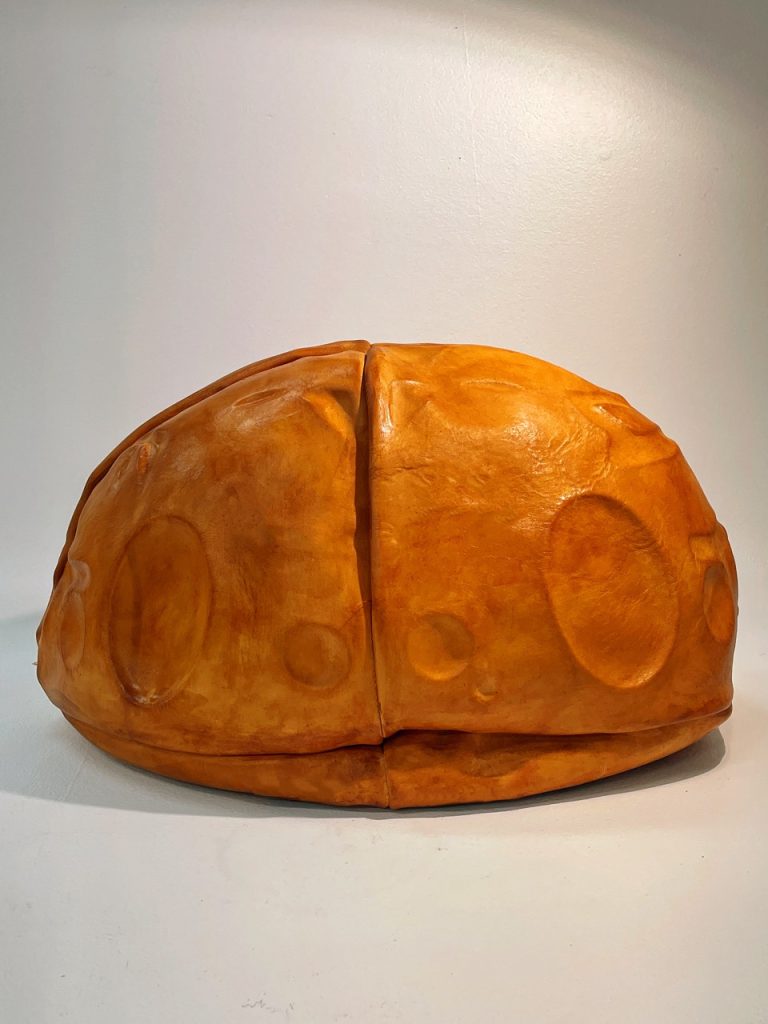
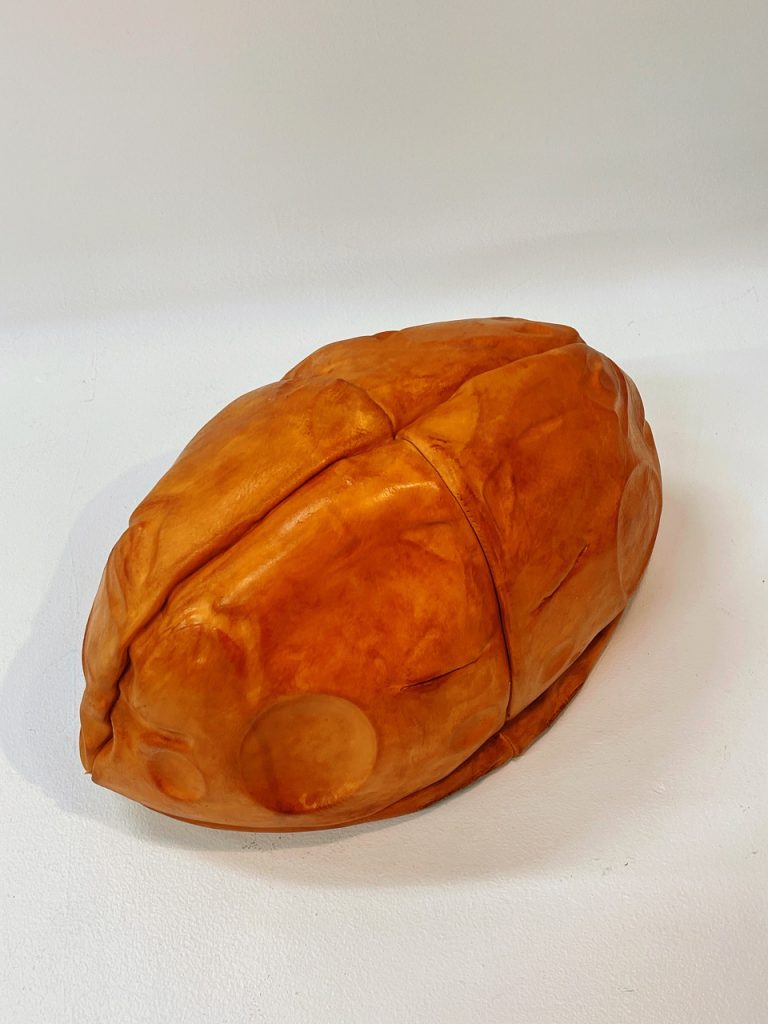
ANGELS ARE EPHEMERAL DIGITAL EXPLORATION

STUDY OF VOIDS
The concept of pareidolia—seeing recognizable patterns or connections in random or ambiguous visual information—guided my exploration of subjective reality in design. This led me to study the Phylliidae or ‘leaf bug,’ whose natural mimicry and camouflage echo the adaptive uses of fashion in post-pandemic society—as a shield, a form of expression, and a means of blending into or standing out from the environment.
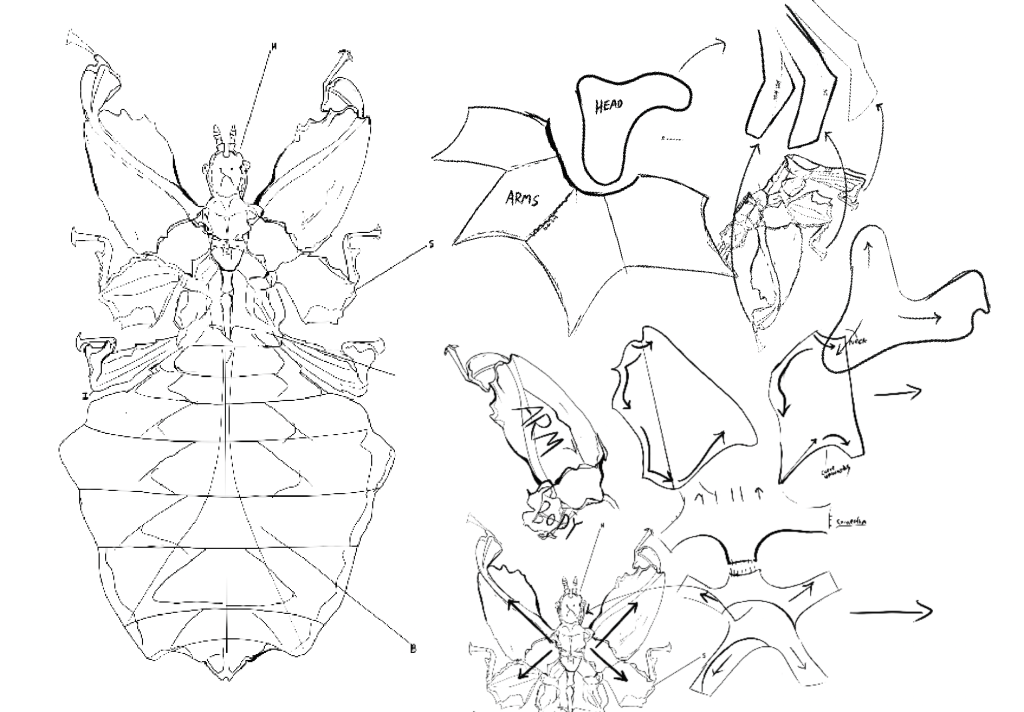
In collaboration with my visual algorithm in Touch Designer. I started reimagining bodice structures based off the Phylliidae. Starting off using the forms of the bug and slowly morphing to humanoid openings. It then gradually became wearable structures. The use of puffer techniques fulfilled the need for shelter, cocoons and warmth in my narrative.
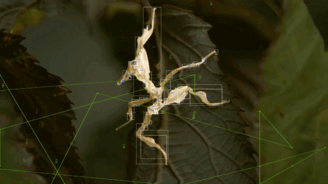
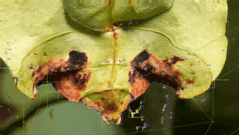


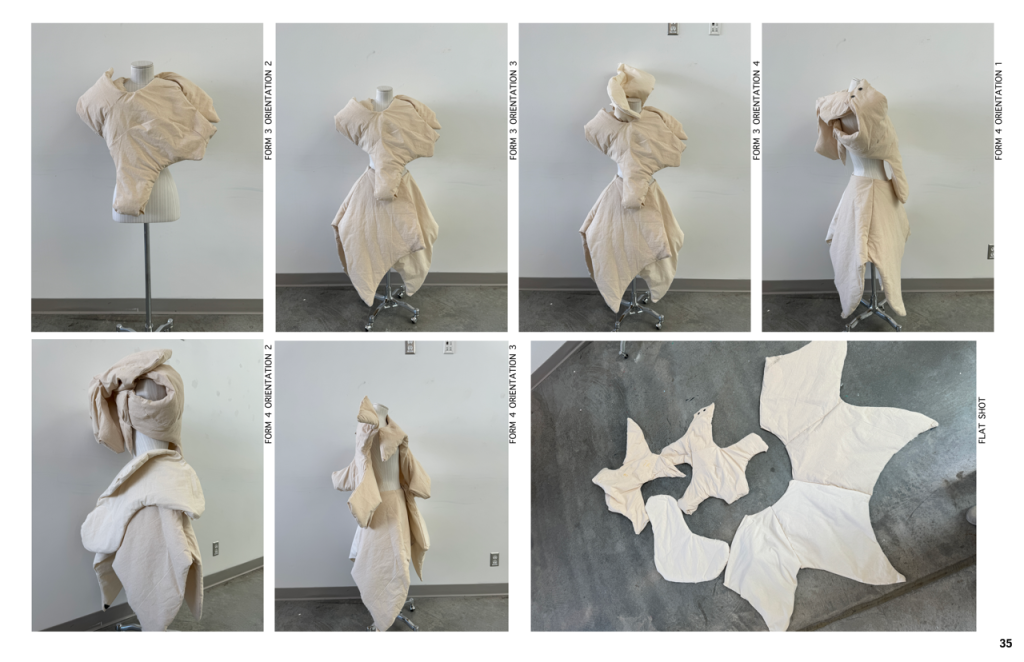
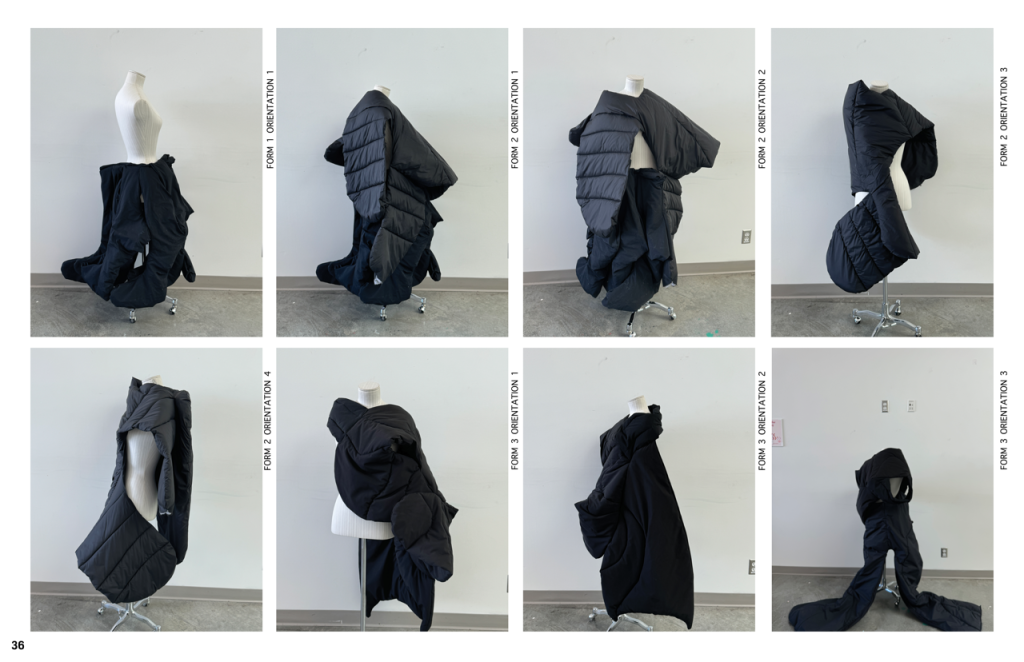
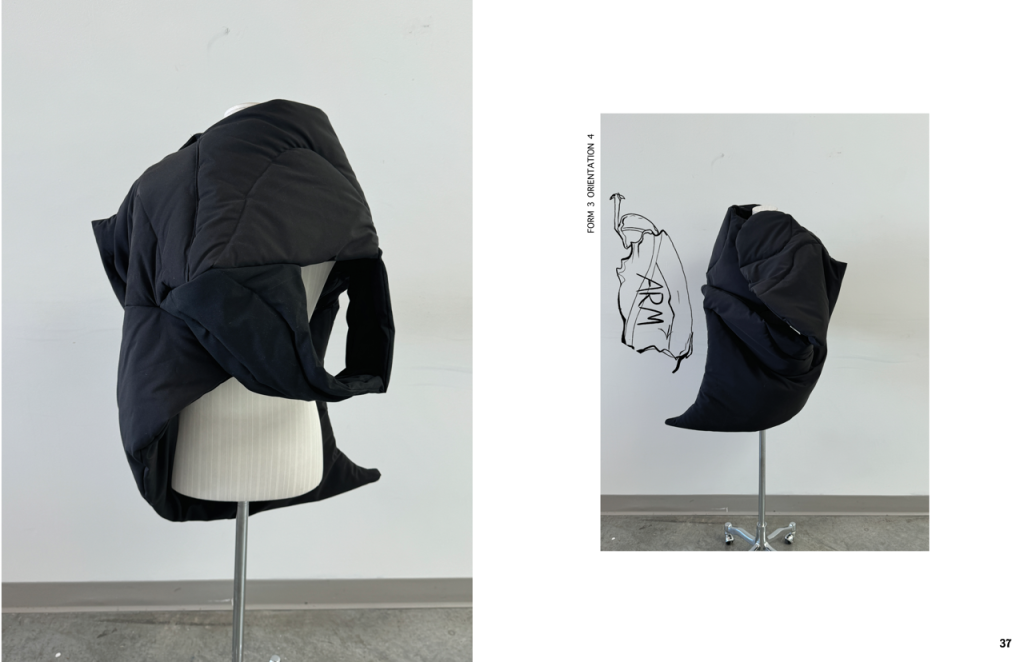
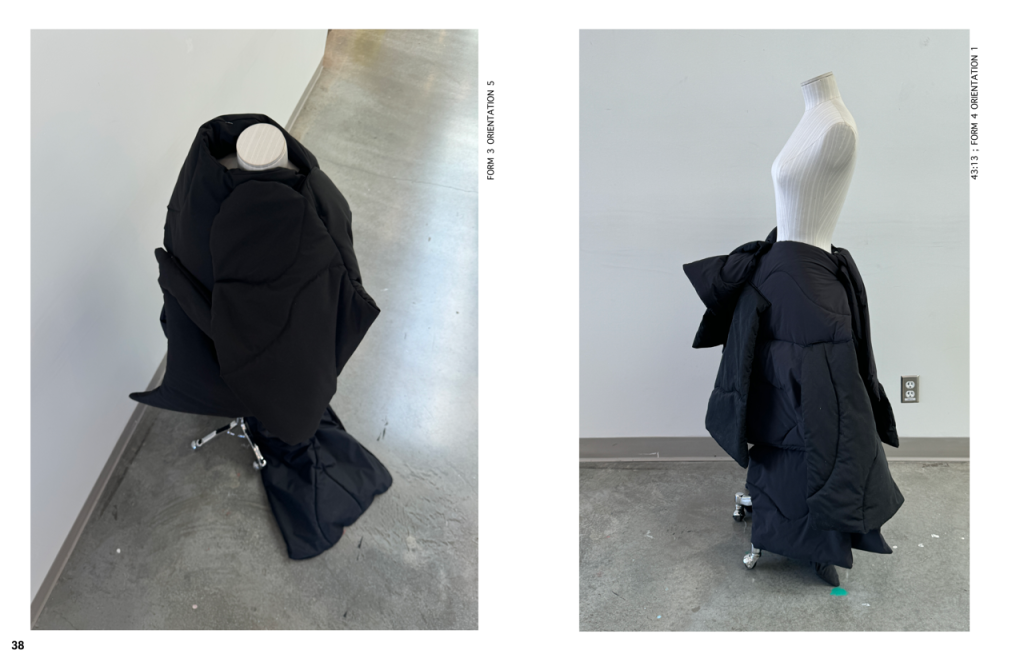
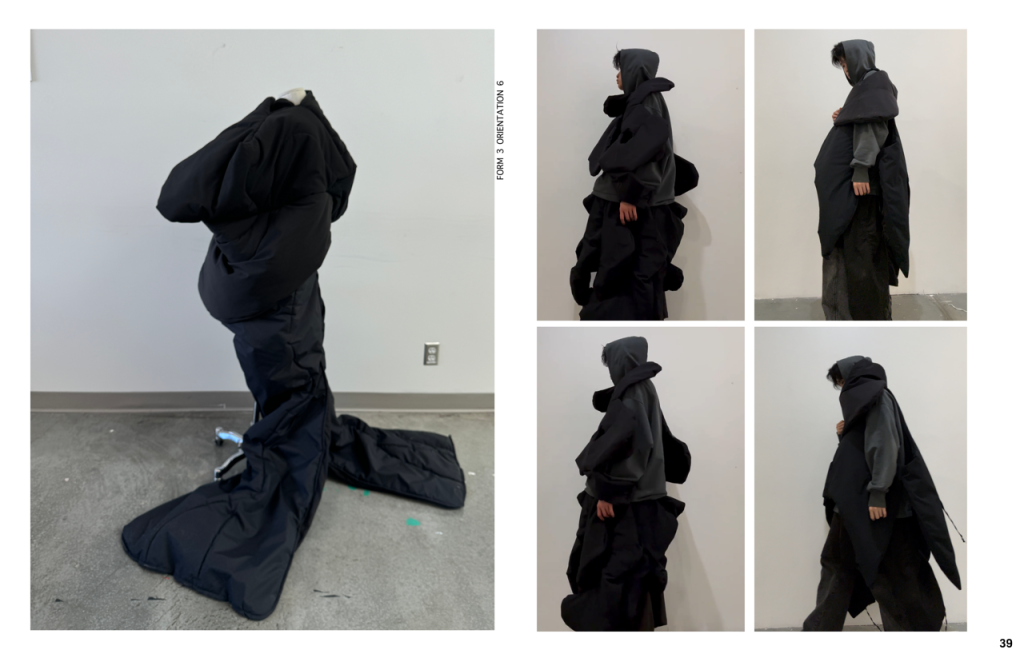
43:13
This project featured 43 square quilts and 13 trapezoid quilts, incorporating patterns inspired by both the phylliidae and human anatomy. Collaborating with a fellow designer Youngjin, we crafted these elements into a garment that eschews traditional bodices, focusing on interactive and expressive forms concluding The Study of Voids.
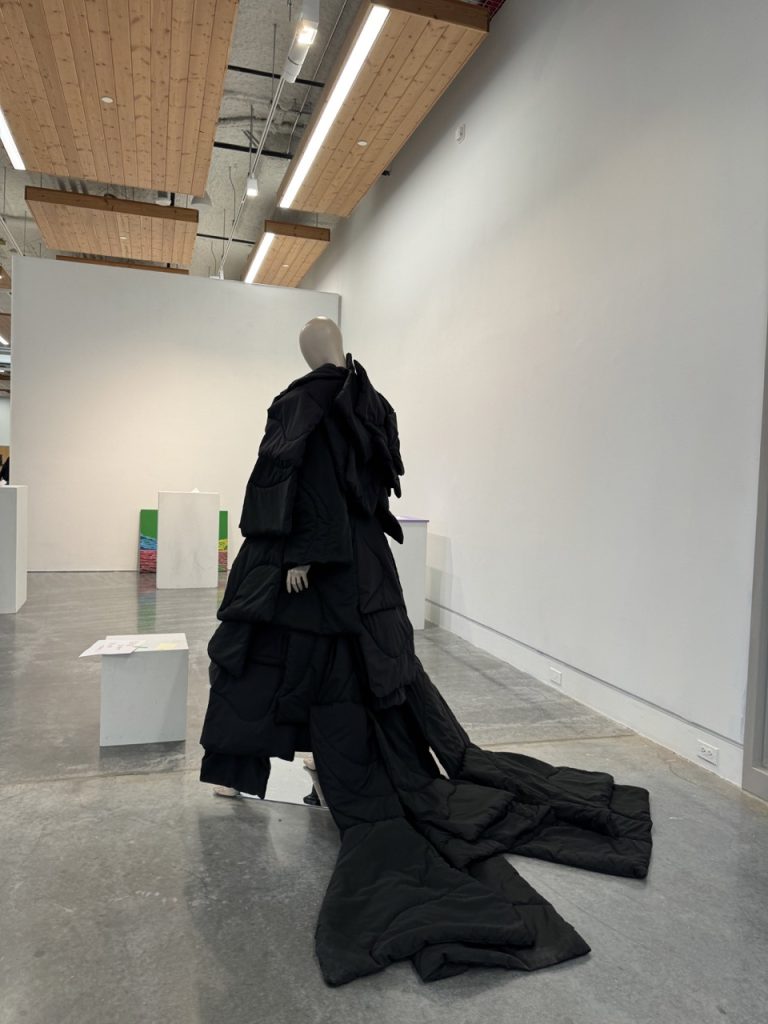

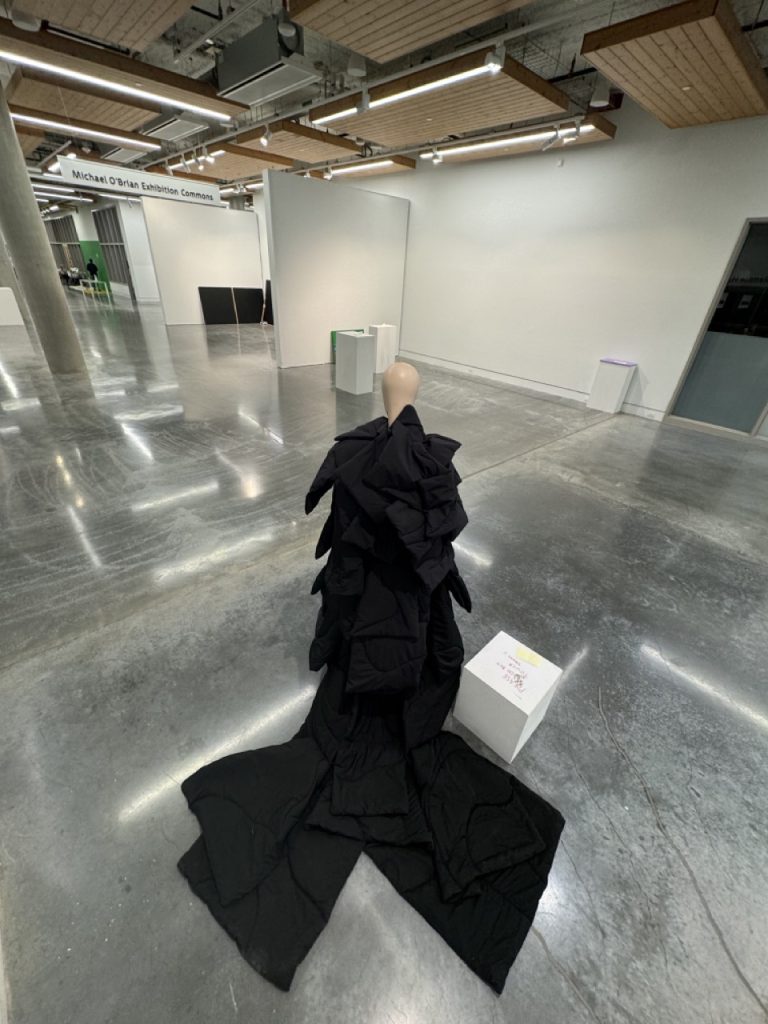
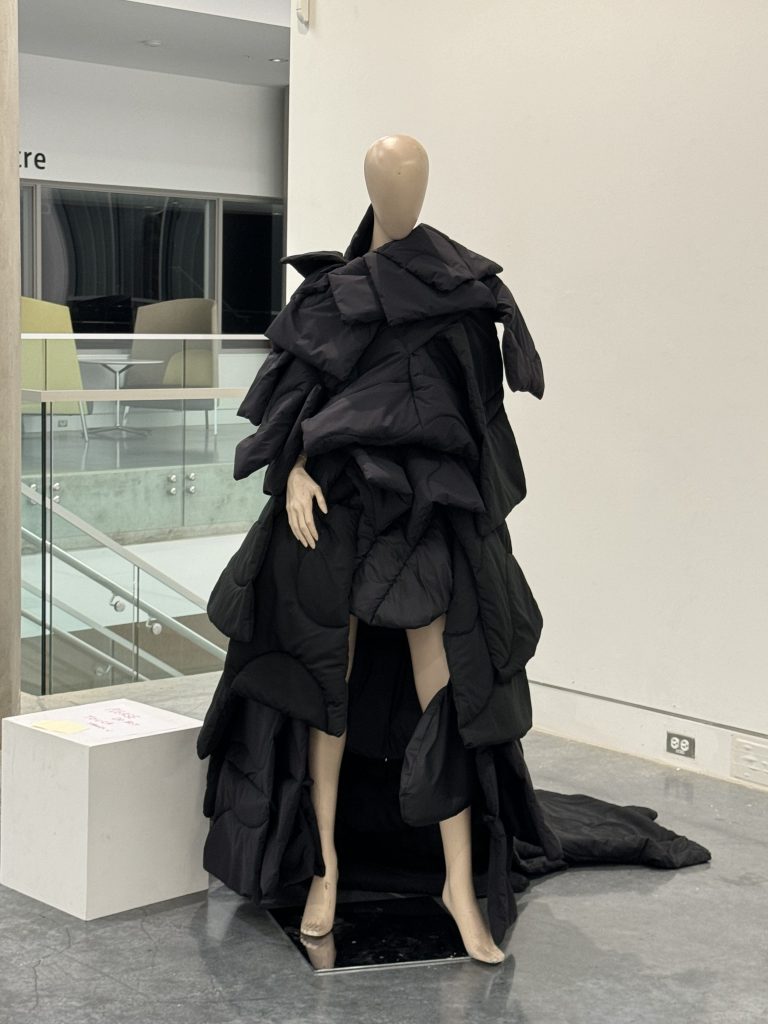
Phylliidae/Body
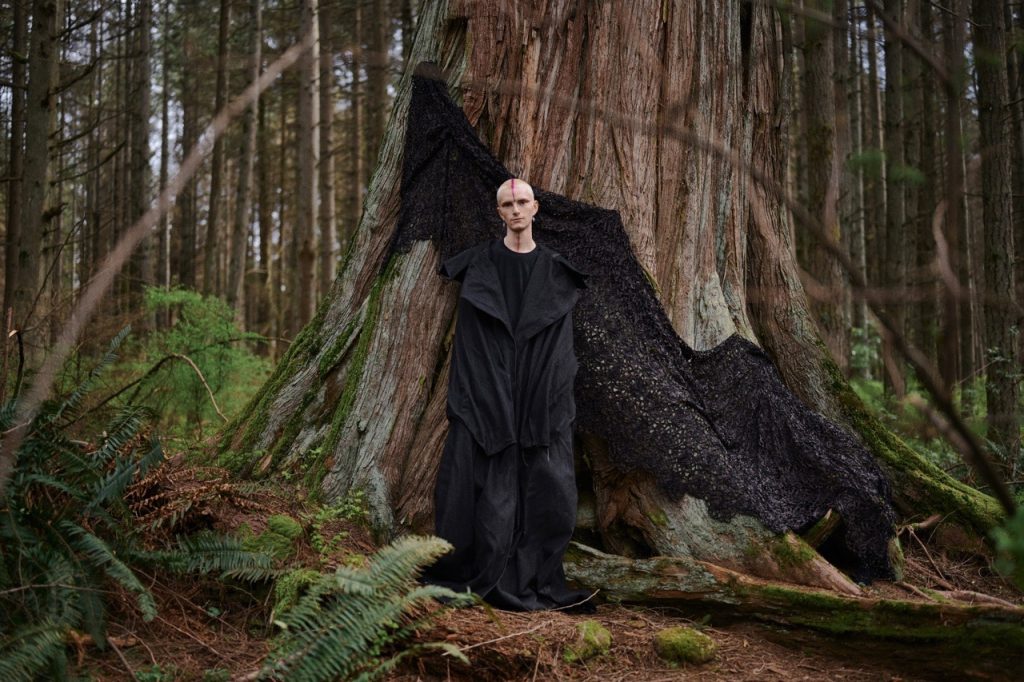

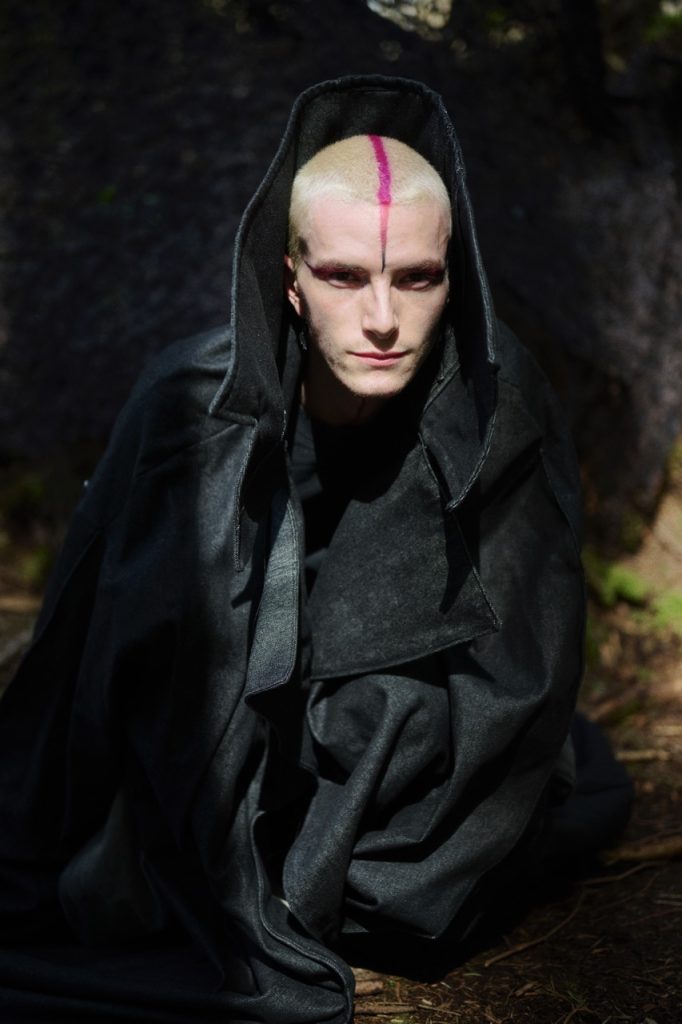

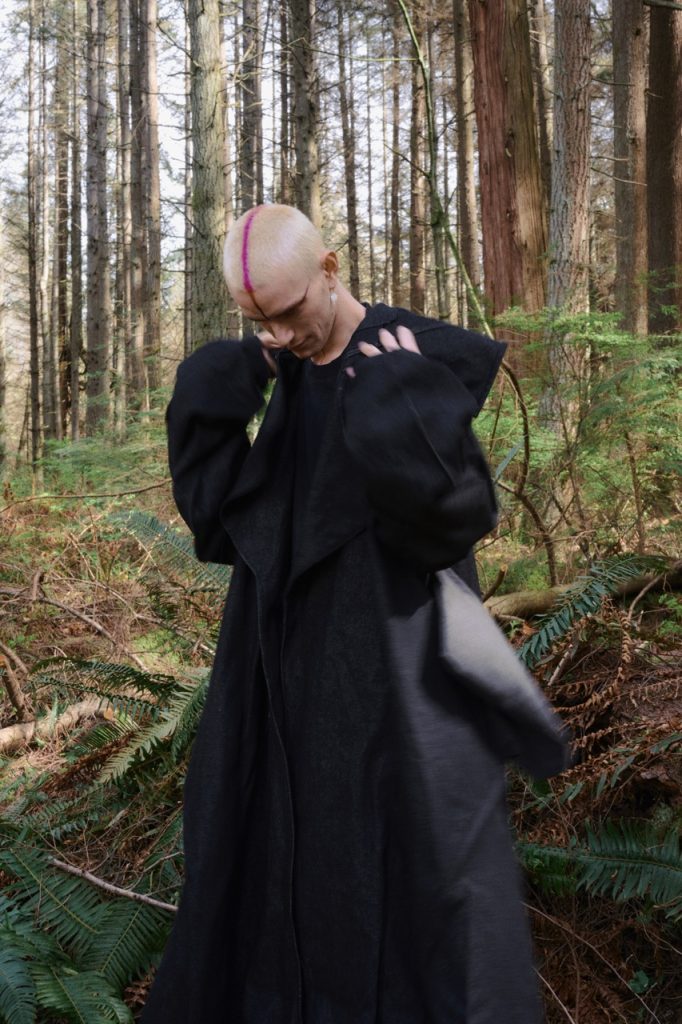
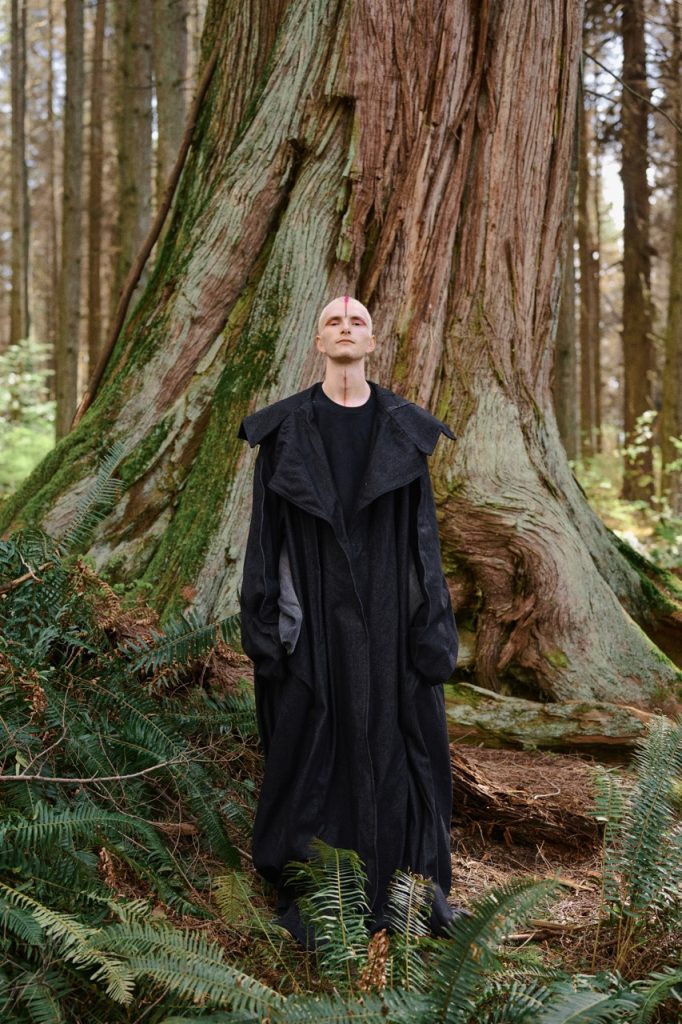
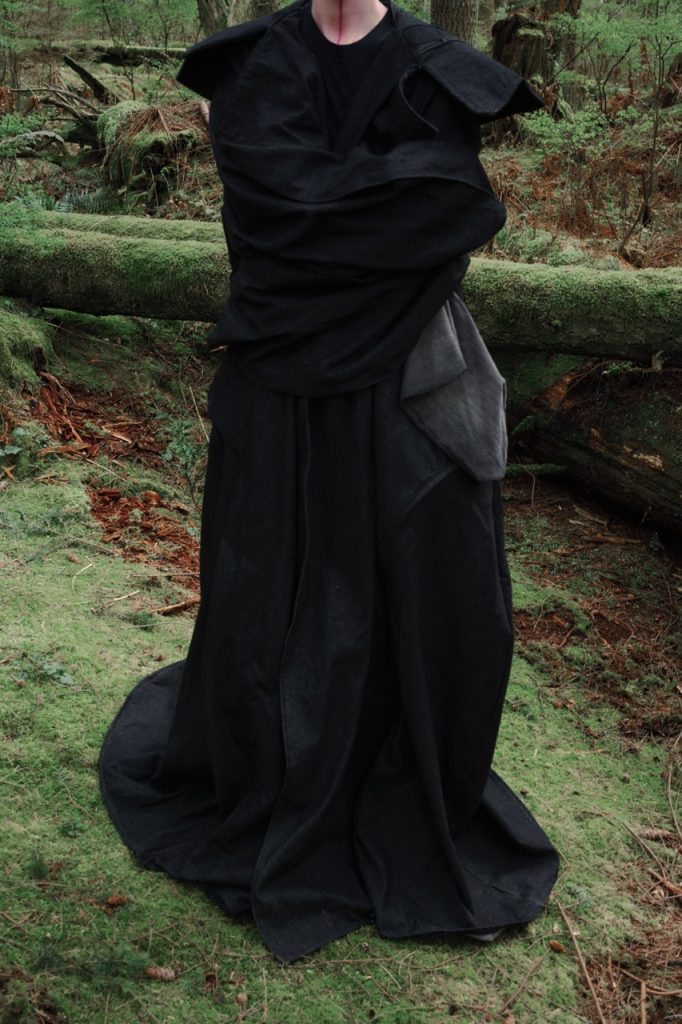
My final garment represents a synthesis of all prior experiments, balancing the distinctive characteristics of the Phylliidae with a streamlined, market-ready design. This garment integrates artistic exploration with functional fashion, suitable for production and retail. The intentional non-usage of denim standard techniques on a denim coat camouflages the texture from a distance, the size of the sleeve and waist hides the body, and the structure of the coat references heavily on the Phylliidae’s form while being wearable and reproducible. The challenge for this project was solidifying conceptual narratives while keeping the integrity of the message. It is also shown from how the garment is exhibited in photos. I took the chance to highlight this interplay in the photography, using both light and shadow to tell a story of concealment and revelation.
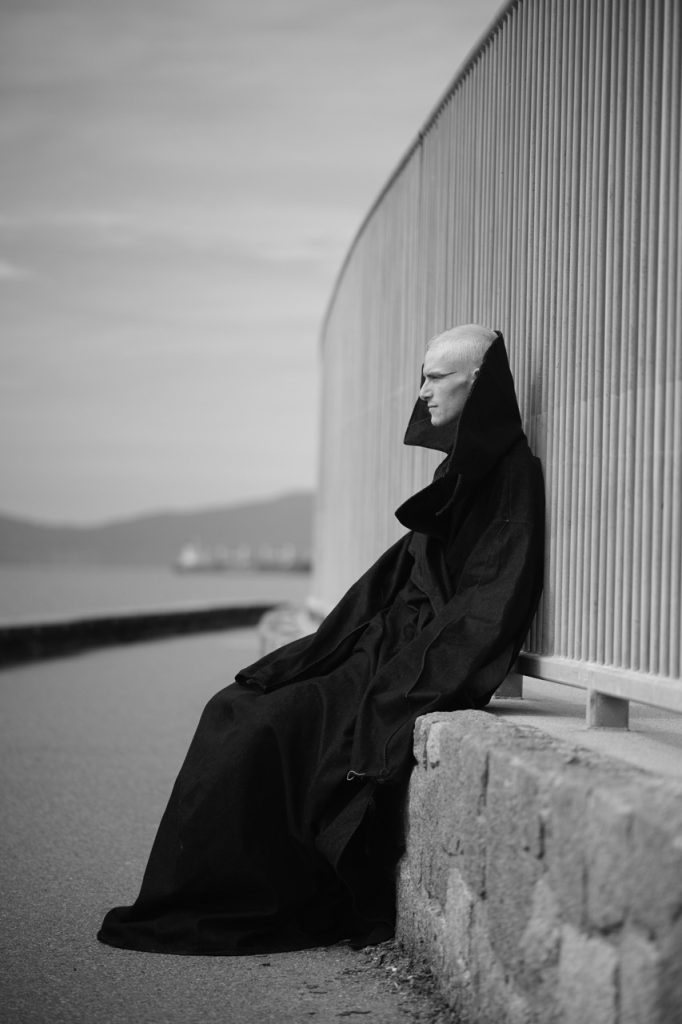

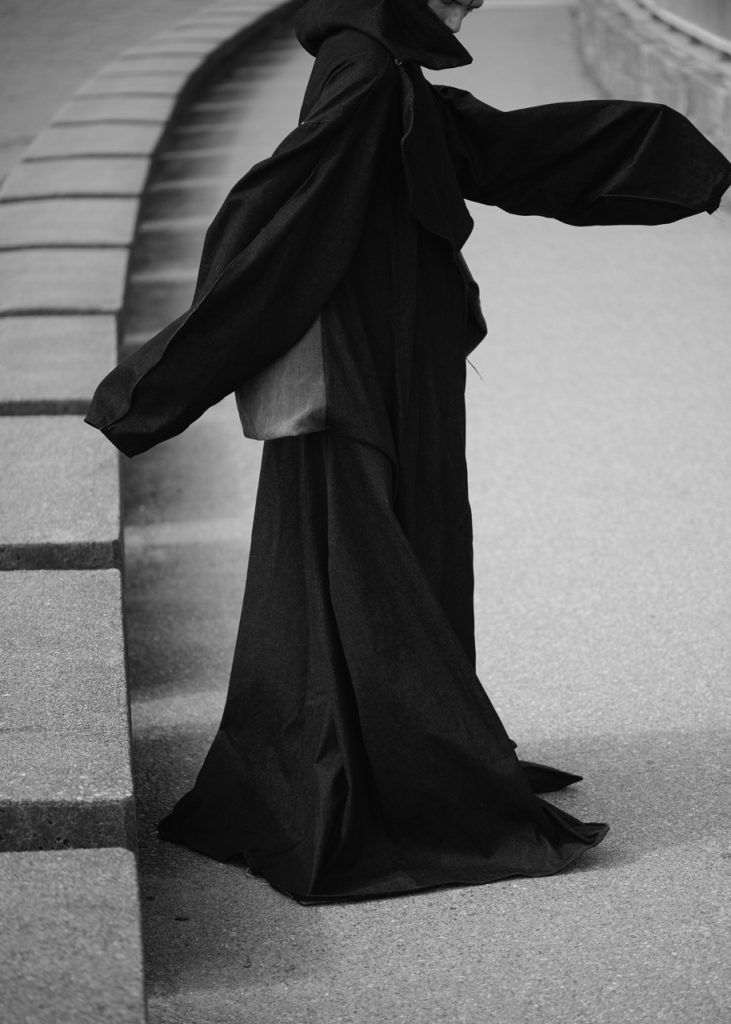
‘Phylliidae/Body,’ presented as part of my ‘Angels Are Ephemeral’ thesis, encapsulates a journey of blending fiction with reality with clothing as a storytelling medium. Exploring the boundaries between visible and hidden aspects of form and identity persisted as one of my main interests. From the exploratory collection to this project, the transitional presence of the interplay between fitting in and standing out marked also my relationship with clothing at the present.
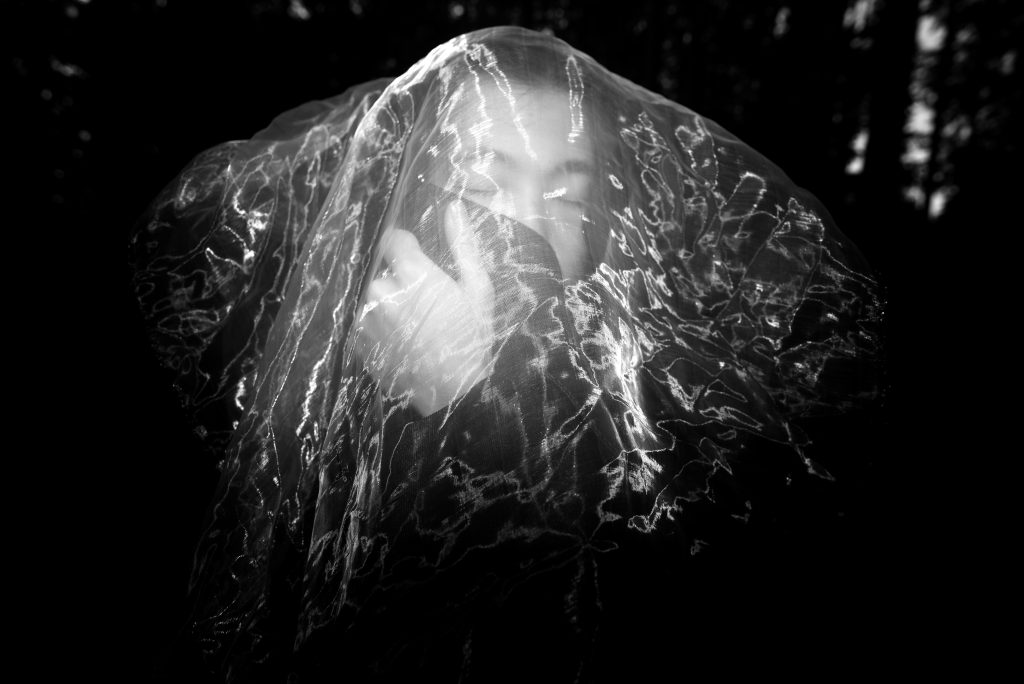

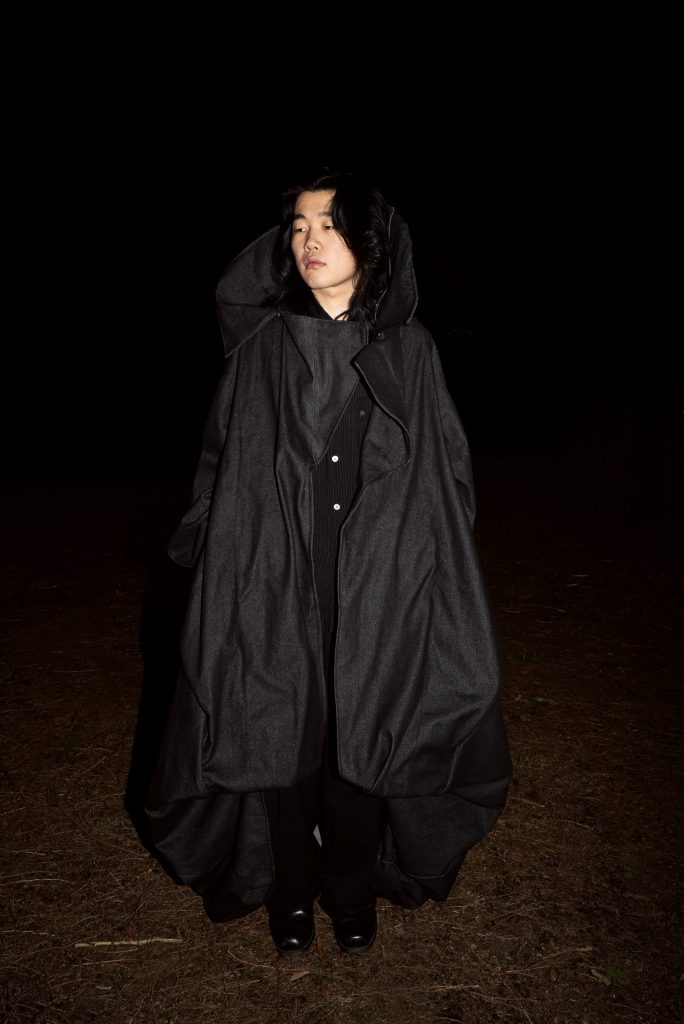

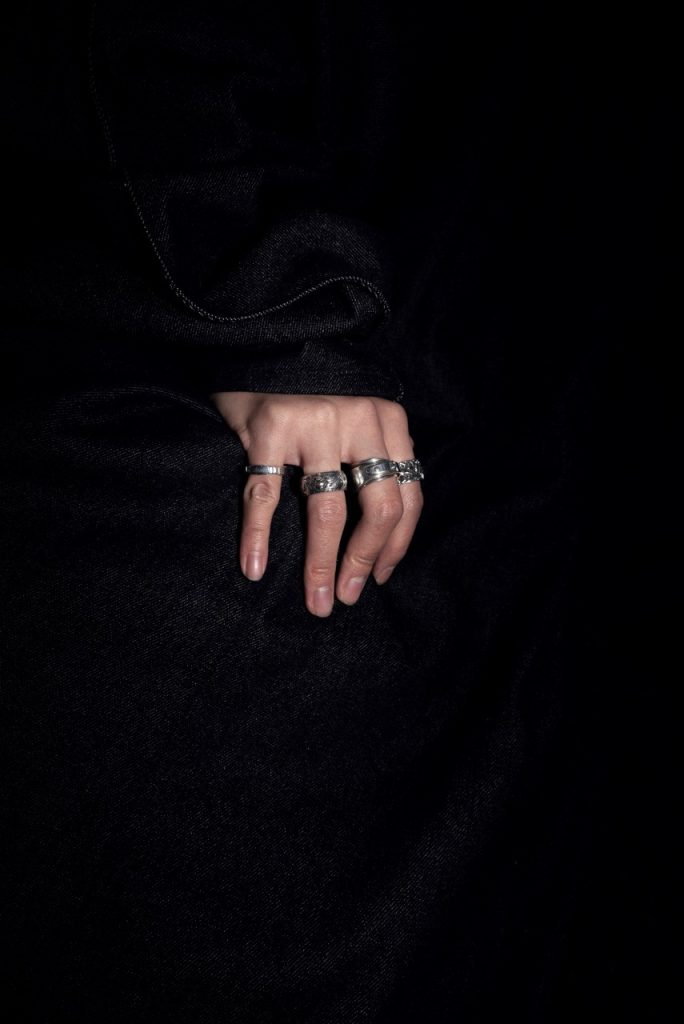
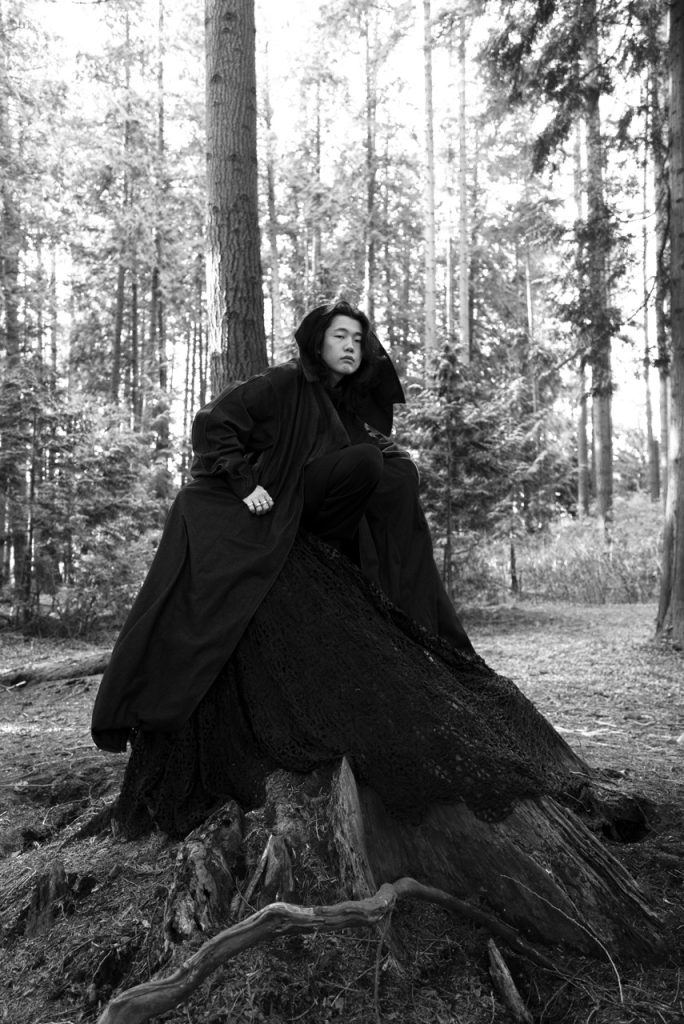
Reflecting on my time at Emily Carr University, my academic and creative journey has been profoundly rewarding, continually challenging the conventions of traditional fashion design and narrative. I am deeply grateful to all the exceptionally talented professors and technicians whose invaluable support has been pivotal in shaping my design identity.
